#as well as desilu productions
Text

is this too niche
#explanation:#revolution meant that desi arnaz had to escape to USA#where desi met lucille ball#and they wanted to work/stay together which meant creation of I love Lucy#as well as desilu productions#which then produced Star Trek#and Star Trek fans are then credited for inventing slash fiction#Star Trek tos#the original series#spirk#trekposting
9K notes
·
View notes
Text
In what ways did William Shatner's portrayal of Captain James T. Kirk differ from the way the character was originally written?

You really have to look at the difference between Captain Christopher Pike (portrayed by Jeff Hunter in the first Star Trek pilot, “The Cage”) and Captain James Kirk (portrayed by William Shatner in the second Star Trek pilot, “Where No Man Has Gone Before”) to see the evolution of the Captain in Star Trek.
As originally written, the Captain of the USS Enterprise was a rather dark, tormented man who was already thinking of resigning his Starfleet commission (in the pilot episode) because he was fed-up with the demands of leadership. That was Jeff Hunter’s portrayal of Christopher Pike.
^^^ Jeff Hunter’s Captain Pike appeared as almost a reluctant commander. He was introspective and self-doubting and mostly humorless, and he didn’t want the responsibility of issuing life-or-death orders and leading others into deadly situations.
He didn’t like women on the bridge, either, except for his First Officer Number One (because she had no obvious feminine personality).
Pike was also aggressive. He barked most of his lines, he glared a lot, and he was even violently intimidating (choking a frightened and physically-frail Talosian, for example, and directly threatening to burn a hole through the alien at close range).
^^^ If looks could kill, right. No wonder the Talosians concluded that humans were "too violent and dangerous a species for our needs.”

NBC rejected the first Star Trek pilot for several reasons, including Jeff Hunter’s Christopher Pike, who was considered too intense, angry and not very likable. Gee, wonder why?
Could it be because Jeff Hunter’s controlling wife was often on the set, badgering Hunter as well as the producer and director? That probably made Hunter’s job many times more difficult, and I think it showed in his performance.
When NBC requested a second Star Trek pilot, it was decided to rewrite some characters and do away with others. For example, First Officer Number One was entirely removed from the script; Spock was promoted to First Officer as well as Science Officer; Doctor Boyce (Ship’s Physician and bartender) was also eliminated from the script and replaced with a more down-to-earth country doctor (this was Doctor Piper, who quickly evolved into Doctor McCoy); and Christopher Pike was to be rewritten as a kinder, gentler, more likable Captain.
However, there was a contractual problem, inasmuch as Jeff Hunter had signed to do only one pilot and a series (if NBC bought it)…but he didn’t sign to do two pilots and a series. Gene Roddenberry and Desilu Studios really wanted Jeff Hunter to continue working on the show, but they knew they’d have to cajole Hunter (and his overbearing wife) into signing for a second pilot.
So, Roddenberry called Jeff Hunter in for a post-rejection screening of The Cage to discuss character revisions and signing another contract for another pilot. This is where it got messy.
Desilu production head Herbert Solow was at the screening and described it best:
“In the eyes of the New York and Los Angeles television world, Star Trek was already a failure. But we knew differently and looked forward to running the completed pilot for our star, Jeff Hunter. We hoped it would convince him to do another pilot. Gene and I waited in the Desilu projection room for him to arrive. He never did. Arriving in his stead was actress Sandy Bartlett, Mrs. Jeff Hunter. We traded hellos, and I nodded to Gene. He flicked the projection booth intercom switch. ‘Let's go.’
“As the end credits rolled, and the lights came up, Jeff Hunter's wife gave us our answer: ‘This is not the kind of show Jeff wants to do, and besides, it wouldn't be good for his career. Jeff Hunter is a movie star.’ Mrs. Hunter was very polite and very firm. She said her good-byes and left, having surprisingly and swiftly removed our star from our new pilot.”
–Herb Solow, Inside Star Trek: The Real Story
So, Jeff Hunter just vanished from Star Trek. He wasn’t fired, as some claimed…he quit. Or, more precisely, his beast of a wife quit for him. Two years later (1967), after Star Trek was a success, Jeff Hunter divorced his wife.
As it happened, there was another actor invited to that same screening (quietly taking notes), and that actor was Bill Shatner, who was waiting in the wings when Jeff Hunter opted out.
Thus entered the new Captain of the Enterprise, James R. Kirk.
^^^ Yep, he was actually named James R. Kirk in his first Star Trek appearance: It says so on his tombstone in “Where No Man Has Gone Before,” the second Star Trek pilot.
Shatner’s Kirk was basically just the opposite of Hunter’s Pike. Captain Kirk was thoughtful but not deeply introspective; he was not tormented but was supremely confident and never self-doubting; he loved his ship and crew, but was willing to take life-or-death risks with both; he was perfectly comfortable with women on the bridge (or just women in general); and he could be humorous, if a little irritating.
^^^ Captain Kirk was a more likable, humorous and confident alternative to Christopher Pike.
Captain Kirk, unlike Captain Pike, was always a ready negotiator, offering an olive branch first and only turning to violence as a last resort; indeed, even in violent scenes, Kirk was typically defending himself.

In short, Shatner portrayed Kirk as a role model for kids. Shatner fully realized that Star Trek was a kids’ show, first and foremost, so he played a kid’s idea of a starship captain…and nailed it.
It became apparent from the second pilot onward that Kirk’s human warmth was a perfect balance for Spock’s icy Vulcan logic (which evolved as the first season of Star Trek progressed). Their dynamic became pure gold for the series and the movie franchise.
^^^ DeForest Kelley’s emotional and quick-tempered Doctor McCoy assumed the role of a counter-character playing against Spock, while Kirk became the reasonable middle-man between the two, and so was born the legendary trio.
By Charles Austin Miller, Investigative Journalist and Publisher.
Found at Quora:
#space opera#space western#star trek#star trek the original series#jeffrey hunter#william shatner#christopher pike#james t. kirk#star trek tos#60s sci fi#60s tv series#60s tv shows#desilu studios#gene roddenberry
12 notes
·
View notes
Text
LUCY & THE SWANS
BALL, CAPOTE & PALEY

The new FX series "Feud: Capote vs. The Swans" depicts a world that Lucille Ball knew all too well - wealth, fame and celebrity. Although she does not inhabit the New York Society of Babe Paley, Slim Keith, Ann Woodward, C.Z. Guest, Gloria Guinness and others, she and her Desilu empire lie just outside of it - her influence on the era keenly felt.

Episode 1 of the teleplay ("Pilot") begins in 1958, and takes us to the executive boardroom of CBS in New York. There, Bill Paley (Treat Williams) holds forth, a photo of Lucy and Desi prominently hovering over his shoulder.

In this room, the Paley and the CBS brass made programming moves played out on a schedule board. The Monday 9pm time slot is occupied by "I Love Lucy", with a small photo of Lucy and Desi (the same one that hung on the wall) tucked into the title card - as if they needed reminding of who they were! The only slight faux pas is that "I Love Lucy" (as a half hour series) did not run in 1958. Its final episode aired in May 1957. It then became an hour-long celebrity-driven musical comedy hour under the banner of "The Westinghouse Desilu Playhouse." Paley and CBS probably wanted Lucy and Desi for a 7th season, but Desi had other plans. He wouldn't kill the Ricardos (metaphorically) but relegate them to specials, interspersed with Desilu productions of new drama and comedy. It is possible that the action of "Feud" in this scene lies somewhere in that murky period between Desi's plans, and Paley's wishes for a seventh season of the half-hour format.

In actuality, during 1958, the 9pm Monday time slot was occupied by "The Danny Thomas Show" (filmed at Desilu) and "The Ann Sothern Show" (produced by Desilu). Monday also featured the Desilu Western "The Texan," making the only half hour of CBS's Monday primetime NOT created by Lucy and Desi "Father Knows Best."
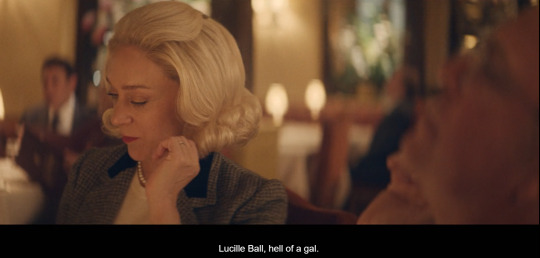
Episode 6 ("Hats, Gloves, and Effete Homosexuals") set in 1978 includes a luncheon conversation at La Cote that mentions Lucille Ball and Lucie Arnaz. Truman's new boyfriend Rick (Vito Schnabel) is a handyman who once fixed Ball's air conditioner in Palm Springs.

Truman has promised to bring Rick to see They're Playing our Song on Broadway starring Lucie Arnaz. Rick says that he met little Lucie while she was swimming laps.
BILL & BABE PALEY
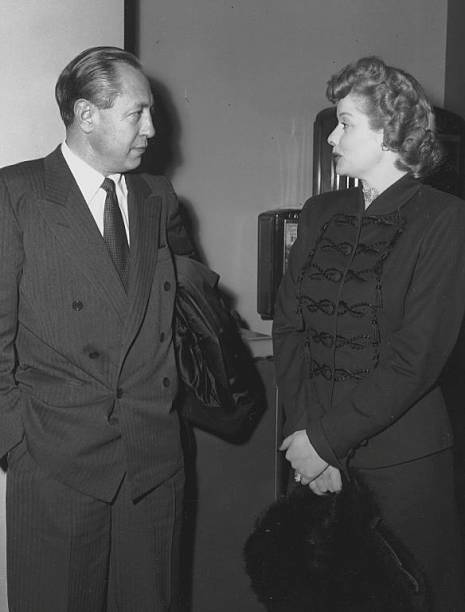
The power and influence of William S. Paley cannot be underestimated. He literally built CBS (the Columbia Broadcasting System) from a small radio station to a multi-media conglomerate, serving as Chairman for much of its existence. He shepherded CBS from radio to television, and was responsible for giving the green light to Lucille Ball making the transition from "My Favorite Husband" to "I Love Lucy," bringing her real-life husband along for the ride. Without Paley and Lucy, CBS would not have gotten a foothold in an industry dominated by the National Broadcasting Corporation (NBC).
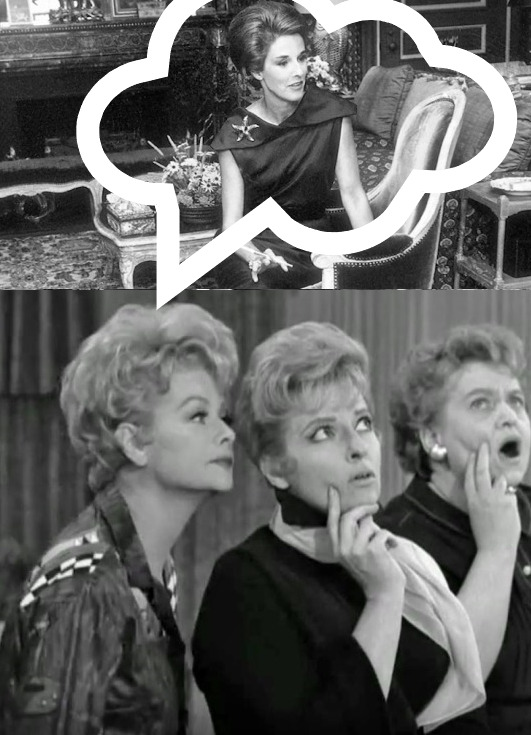
Paley's second wife was socialite Barbara Cushing Mortimer, who he married the year before he met Lucille Ball. Mortimer is best known as Babe Paley, and she was Truman Capote's favorite of the Swans. In "Lucy's Barbershop Quartet" (1963), the group needs to find a replacement singer for the group and Viv suggests the unseen character of Barbara Cushing, who is a soloist in their church choir. Although Lucy, Viv, Thelma, and Dorothy were definitely not swans (more like Danfield Ducks) the writers were tipping their hat to the big boss's wife.

A few years later, in "Lucy Meets Danny Kaye" (1964), Kaye telephones Bill Paley to see if he has any spare tickets for his show to give fan Lucy. The best he can do is tickets to "The Jackie Gleason Show." Paley does not appear, nor do we hear his voice.

In real life, Paley and Ball were both in the first group of inductees to the Television Academy Hall of Fame in 1984. Ball and Paley sat at the same table together at the ceremony.
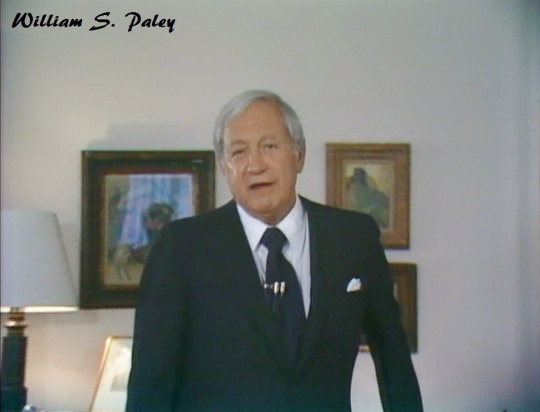
In 1976, he joined those paying tribute to Lucy on "Lucy and CBS: The First 25 Years." Paley and his wife Babe had homes in Manhasset Long Island, and Squam New Hampshire, respectively known as Kiluna Farm South, and Kiluna Farm North, where they entertained a myriad of celebrities, Lucille Ball among them.
TRUMAN CAPOTE

On screen Lucille Ball had little to no interaction with writer Truman Capote. But in her personal life, Ball was guest at at least one of his lavish parties. Gary and Lucy's photo album included a photo of the Mortons at a December 13, 1975 party hosted by Capote, Allan Carr, and John O'Shea in Lincoln Heights, a wealthy neighborhood of Los Angeles. The 'mug shot' was part of a party game where guests were 'arrested' and forced to pay bail in order to get released. The money was usually donated to the host's favorite charity.

In July 1978, Capote joined Lucille Ball at Westbury Music Fair to see Lucie Arnaz perform in "Annie Get Your Gun".
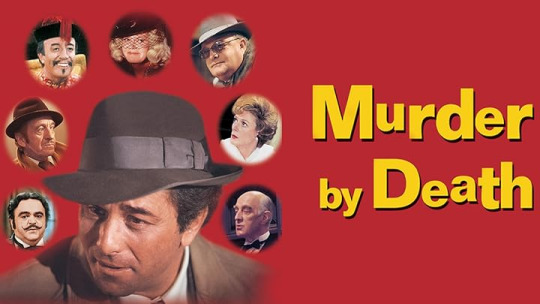
Capote's one foray into acting was in Neil Simon's Murder By Death (1976), a camp comedy send-up of Agatha Christie-style murder mysteries where Capote played the eccentric host, Lionel Twain. The film featured a few stars with close connections to Lucille Ball.
Peter Sellars (Sidney Wang) starred in Will The Real Mr. Sellars...?, an oddball film from 1969 with a very brief cameo by Lucille Ball courtesy of hidden camera footage.
Elsa Lanchester (Jessica Marbles) famously guest-starred on "I Love Lucy" as a woman who may - or may not be - a hatchet murderess. In 1973, she appeared on "Here's Lucy" as kooky bank robber Mumsie Westcott.
Although screen writer Neil Simon never wrote for Lucille Ball, or even appeared on the same screen with her, they did share credits on two television shows. He was a staff writer on “The Garry Moore Show,” which Lucy appeared on in 1960. Simon and Ball were both featured on “Bob Hope’s World of Comedy” (1976), but were not onstage at the same time. It was Lucie Arnaz who worked closest with Simon. She starred on Broadway in They’re Playing Our Song (for which Simon wrote the libretto) in 1978. She then took over the role of Bela in Simon's Pulitzer Prize-winning Broadway play Lost in Yonkers in 1992.
MISC. SWANS
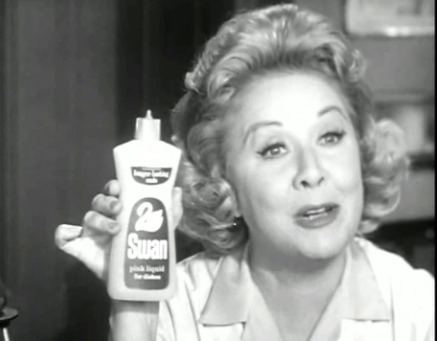
Vivian Vance doing an in-character commercial for Swan dish soap on "The Lucy Show." Swan was made by Lever Brothers, and was discontinued in 1974.
SWAN SONGS

LUCY: "Would you begrudge an expectant swan her song?"
RICKY: "You seem to forget that this particular swan has no talent." ~ Lucy's Show Biz Swan Song (1952)
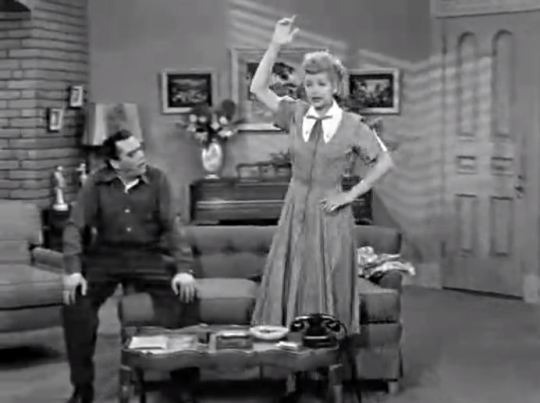
LUCY: “It’s time for that swan to hit the come-back trail.”
FRED: “That swan’s got a little ham in it.” ~ The Indian Show (1953)

#Capote and the Swans#Truman Capote#Swans#Feud#Feud: Capote vs the swans#Bill Paley#William Paley#Babe Paley#Capote#Paley#CBS#TV#Lucille Ball#Desi Arnaz#I Love Lucy#1958#Murder By Death#Vivian Vance#Lucie Arnaz#Gary Morton#Danny Kaye#Treat Williams
11 notes
·
View notes
Photo
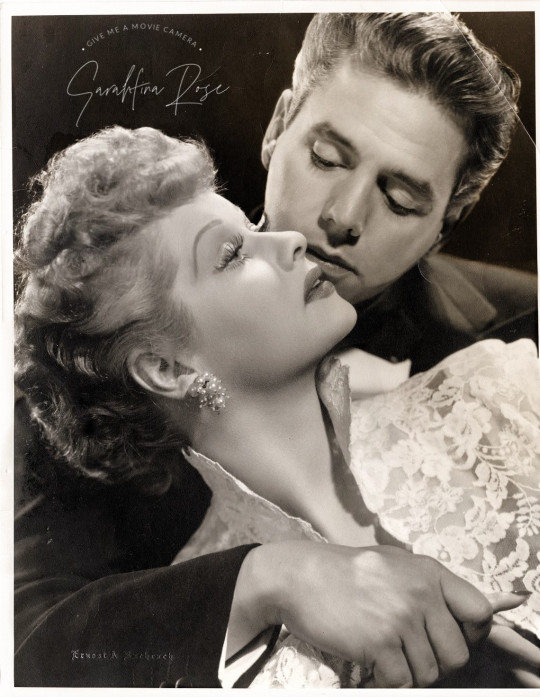
I was watching I Love Lucy on Pluto TV last night and it completely slipped my mind that yesterday marked Desi Arnaz’s 106th birthday.
His was a classic Riches-to-Rags, Rags-to-Riches Cinderella tale. Desiderio Alberto ‘Desi’ Arnaz y de Acha III was born 2 March 1917 in Santiago de Cuba, Oriente Province, Cuba, the only son of wealthy landowner Desiderio Alberto Arnaz y de Alberni II (a prominent Cuban politician, who, to date, was the youngest mayor of Santiago de Cuba from 1923 to 1932) and his wife, Dolores ‘Lolita’ de Acha y de Socías (one of the most beautiful women in the Caribbean, the daughter of a businessman, one of three founders of Bacardi Rum Limited, the world's largest privately-owned spirits company). Desi was of the small but vastly privileged, upper-class y de Acha, the descendent of Cuban nobility of whose colonial ancestors originated from Santander, Provincia de Cantabria, Cantabria, Spain. (His grandfather, Dr Desiderio Alberto Arnaz y Alberni I, was assigned to the first United States volunteer cavalry in Cuba, the ‘Rough Riders’ under the leadership of ‘Hero of Cuba’ Theodore Roosevelt during the Spanish-American War on 1 July 1898. To legend, they sieged San Juan Hill on horseback, and though the forged conquest did not belong primarily to Roosevelt, for the conflict was an integrated effort between the white volunteer regiment and the 1,250 black Buffalo Soldiers, the famed battle gained Cuba her independence from Spain—a victory for the people, the Cuban people).
At the height of the Cuban Revolution of 1933, Desi and his family were forced to flee their Motherland, leaving their riches behind. Following a brief election, the government collapsed with the removal of President Gerardo Machado y Morales from office in August of 1933. The opposing anarchists seized all political leaders and stripped them of their power. Among them, Desi’s father, imprisoned by the regime, before his brother-in-law, Alberto de Acha, intervened on his behalf, thus making his escape to Miami, where he was to remain in exile. Having lost their holdings to the rebels who confiscated their property (their palatial home, a cattle ranch, two dairy farms, and a vacation villa on a private island in Santiago Bay), his father sent for Desi and his mother, who took refuge in Key West, Monroe, Florida in 1934. When Desi washed upon the shores of the Americas, his father had established an import-export company, where the family of three took up frugal lodgings in the company warehouse and dined on cans of cold beans. Desi came to live in New York City and Los Angeles for about one year, where he tightened his belt for survival and scrambled for employment as a struggling musician. Following an engagement as a guitar player for a Latin-American band at the Roney Plaza Hotel in Miami Beach, and a cursory stint with the Xavier Cugat Orchestra in 1937, he made his Broadway debut in the Rodgers and Hart musical Too Many Girls, where he reprised the role for RKO's major motion picture of the same name in 1940. During the course of filming, he fell head-over-heels for the Apricot Queen, Lucille Désirée Ball. The couple eloped on 30 November 1940 in Greenwich, Fairfield, Connecticut. By 1949, at the age of thirty-two, Desi established himself a renowned nightclub entertainer as conga-playing band leader for the travelling self-titled Cuban orchestra.
Most Hollywood buffs would do well to remember the Power Couple formed by Desilu Productions—a celluloid empire built on the backs of Lucy and Desi’s American Dreams, despite the public scandals and tumultuous marital woes. But at the crowning glory of their golden existence, there are those who neglect Desi's legacy and his reluctant resignation to his fate as the Man Behind the Curtain, to remain in Lucy’s shadow so long as he lived. Lucy, of whose celebrity distinction was of higher standing than her husband’s. Desi, though undoubtedly talented, who was not exempt from the unjust ostracization and societal prejudice that plagued him as a Cuban Spaniard immigrant in racially-charged Hollywood. For those who clutched their pearls at the prospect of Middle American households who might've dismissed acceptance of the world’s first interracial couple on television, Lucy and Desi defied those expectations and dissolved racial barriers in an era dominated by cultural strife. Audiences of all races, colour, and creed came together to shower the Ricardos with adoration and praise, because they came to understand the Ricardos epitomized the human experience, no matter that they didn't reflect the typical post-war domestic demographic. Against all odds, the world fell in love with the All-American Ricardos… white, Hispanic, or otherwise. Lucy and Desi, to be envied by all... America's Sweethearts.
On his 106th birthday, we remember Desi for the pioneer he was, as the Mastermind behind the nation’s most Beloved Redhead.
Behind every great woman lies a greater man.
Perhaps Desi speaks for us all when he declared his everlasting love, in his own words... ‘I Love Lucy was never just a title.’
💓 Happy Heavenly Birthday, Desi. 💓
𓆩♡𓆪 · ・ 𓆩♡𓆪 · ・ 𓆩♡𓆪 · ・𓆩♡𓆪 · ・ 𓆩♡𓆪 · ・
#my edit#classic television#old hollywood#1950s#I Love Lucy#p: desi arnaz#p: lucille ball#happy heavenly birthday
39 notes
·
View notes
Text
If you are a STAR TREK fan and need an antidote to Gene Roddenberry's self-mythologizing about his and the franchise's (alleged) progressive idealism, I recommend the following:
Read INSIDE STAR TREK: THE REAL STORY by Herb Solow and Robert Justman. Solow and Justman were there (Solow was the Desilu head of production and Justman an associate producer on TOS), and they puncture a lot of Roddenberry's myth-making very effectively. One side effect: Hearing Alexander Courage's STAR TREK theme will start to make you mad once you learn of Roddenberry's sleazy trick to pocket half of Courage's royalties.
Watch PRETTY MAIDS ALL IN A ROW, a 1971 satire/exploitation film/black comedy directed by Roger Vadim and written and produced by Roddenberry (based on a now-obscure 1968 Francis Pollini novel), with a couple of STAR TREK veterans (including William Campbell and James Doohan) in the supporting cast. The movie, which stars Rock Hudson as a former football star turned guidance counselor who uses his position to sleep with and then murder high school girls, is characterized by precisely the same brand of leering-creep sexism as Roddenberry's STAR TREK efforts, here stripped of any veneer of high-minded speechifying. It's not a good movie (it scores a few satiric points here and there, but it's SO sleazy you'll need a shower afterward), but it is instructive in this regard.
Try to come to grips with the fact that before getting into TV, Roddenberry was a speechwriter for William H. Parker, chief of the legendarily racist Los Angeles Police Department, a fact that puts STAR TREK's sometimes very uneasy combination of high-minded rhetoric and liberal imperialism in some perspective. Herb Solow remarked that "it seemed odd that a man as politically and socially liberal as I already knew Gene to be would be so trusted by Chief 'Bill' Parker, well-known in Los Angeles for his ultra-conservative views."
#star trek#teevee#gene roddenberry#pretty maids all in a row#roger vadim#herbert f solow#robert h justman#inside star trek#star trek tos
4 notes
·
View notes
Text
Saw Goncharov finally... sort of
So. I’ve finally seen Goncharov (1973). And I read the Wikipedia article because I had questions. And then Wikipedia couldn’t answer all of my questions.
The movie I saw shared many of the qualities of the Goncharov I’ve seen people talking about, but there were scenes I never saw. And no one talks about the silent shootout sequence where the only audio is the sound of clockwork. (Which really got me in the moment but almost seems ham-fisted given the restraint elsewhere in the production.)
So I started digging, and I don’t think I’ve seen anyone talk about just how many cuts of this film exist. You probably know the main beats of the story.
Scorsese meets Matteo through a family friend. They hit it off, become fast friends, fast forward a couple of years, and Martin is going around Hollywood knocking on doors trying to get his friend’s most ambitious script brought to life.
Lucille Ball, of all people, agrees to help Scorsese come up with the money but the day-to-day production falls to him. (Desilu is long in the rearview mirror at this point, and for reasons she’d never come right out and say, Lucy didn’t want her name on the picture.)
Also, contrary to popular belief, Lucy DID talk about her involvement once. Just a few sentences in her 1974 interview with Dick Cavett.
----
Cavett: What about Goncharov? What made you do it?
Ball: Well, Marty was so passionate about it. He believed in it, and I couldn’t help but believe in him. That’s really all there was to it.
Cavett: But it was sort of a flop wasn’t it?
Ball: You know, I really think it was a sort-sort of a film ahead of its time. And that’s all I’ll say about it. I’m proud of it for my little part in making it happen and that’s it.
----
But I digress. So Lucy gives Scorsese the reigns on the project, but he’s trying to get Boxcar Bertha and Mean Streets made during the long, troubled production in Europe. Matteo is doing a ton of the heavy lifting, and he and Scorsese are butting heads. They're both trying to direct when they can be on set together, and it's giving everyone headaches.
Finally, the film debuts at Cannes in ’73. That’s where things start getting really messy. We have the original cuts: the English cut that debuted at Cannes and the nearly identical “Italian” cut for the theatrical premiere in Rome.
And then you probably know about the changes Warner Bros. demanded for the American release. Scorsese regrets those changes, and that is probably why the movie bombed in the States. But he was trying to get Mean Streets made and compromising on the American release made that happen.
That's all on Wikipedia as is the TCM/Criterion cut from 2011 that tries to replicate the Cannes cut.
And then you also probably know about the hour long, really bad TV cut that aired a few times in the ‘80s and ‘90s. The less said about it the better.
You might not know about Matteo’s director’s cut that had a short theatrical rerelease in Italy in the late ‘80s. This is where Domenico Procacci comes in. Procacci was 13 when the original release happened, but he was a passionate advocate for Matteo’s cut and helped get it into theaters. Then in the ‘90s, he worked on a restoration of that cut for home release, which is where the poster with his name on it comes from. It was a mock-up never meant to be released to the public.
BUT WAIT, THERE’S MORE. You may have seen the name Ed Prescott mentioned in relation to Goncharov, but the dude is super anonymous. No online presence. But I found a couple of ancient forum posts where someone managed to get his email address in 2003.
Prescott was kind of a jack-of-all-trades in the ‘80s and ‘90s. He worked a bunch of different small jobs in the film industry before becoming an archivist for WB. And he’s the guy that saved most of the film we have from Goncharov. Procacci’s remaster wouldn’t have been possible without him.
According to Ed, the most widely pirated version of Goncharov was close to the Cannes cut but not identical. He also says Scorsese worked on but didn’t complete his own director’s cut. And Ed, a hobbyist editor himself, cut together a “complete cut” that he never showed anyone.
So yeah… I have seen a Goncharov now, but I don’t know if anyone has seen THE Goncharov.
14 notes
·
View notes
Photo

With Chicago, Detroit, New York City, Buffalo, Philadelphia and Jamestown now behind them, the cities of Dallas and Fort Worth, Texas were the next scheduled stops for Lucy and Desi on February 10th and 11th, 1956 on their Forever Darling/Heart Fund tour. For this leg of the journey, they will once again call upon the services of Bell Aircraft Corporation to shuttle them from Dallas to Fort Worth for their scheduled personal appearances. Just like the helicopter ride from Buffalo to Jamestown, their 'whirlybird' (as Desi will insist upon calling it) will again be piloted by Floyd Carlson, also a Jamestown native. (In the fourth photo they are met in Dallas by a young Heart Fund Ambassador.) 'Two television stars will be sailing around above Dallas skyscrapers Saturday. Lucille Ball and Desi Arnaz will catch a helicopter ride from atop the Statler Hilton for a trip to Fort Worth. City Council officially sanctioned the ride at its Monday meeting.'—Dallas Morning News, Feb. 7, 1956 In a 2014 article that I found regarding the history of Dallas, one writer made an observation about this 1956 event, but hadn't quite put the pieces together: "There was some sort of cordial relationship between the Arnazes and the people at Bell Aircraft, because they availed themselves of this brand new deluxe chopper in New York as well as in DFW." The reality was that Bell Aircraft was a co-sponsor of this trip but also had another relationship with Lucy and Desi. In 1956, negotiations and production began on a new Desilu action/adventure series called 'Whirlybirds’ (1957-1960). The basic plot was crafted around a helicopter company that was employed to rescue people caught in perilous situations each week. #lucilleball #desiarnaz #foreverdarling #moviepremiere #tour #helicopterride #whirlybird #desilu #dfw #waynelvslcy #ilovelucy #skyscrapers https://www.instagram.com/p/CofVyQip4RR/?igshid=NGJjMDIxMWI=
#lucilleball#desiarnaz#foreverdarling#moviepremiere#tour#helicopterride#whirlybird#desilu#dfw#waynelvslcy#ilovelucy#skyscrapers
4 notes
·
View notes
Text
" 'Mission: Impossible' Succeeded by Destroying the Original " - CRACKED
"While a lot of us were perhaps too young to truly appreciate it, consider now what an intensely old choice that was; to bring back one of the original characters as a mentor/father figure for our new star, only to reveal in the final act that he’s an evil dickwad. That’s like bringing back Peter Venkman as a hit-man who’s hell-bent on destroying the new Ghostbusters. People were upset that Luke Skywalker was slightly grumpy in The Last Jedi -- imagine if he gunned down Rey and crushed Poe Dameron in an elevator shaft.
Because the source material was seemingly less precious to fans than some of the other pop-culture properties that yielded nostalgia-thirsty reboots, the Mission: Impossible film series was able to wage an all-out assault on the original. And while they obviously retained many elements of the original, they literally exploded others." - JM McNab
Two Desilu Productions from the Sixties were "Mission Impossible" and "Star Trek" (TOS) Can YOU imagine what would happen if Trekkies saw a film where Voight was cast as beloved Captain Kirk only to ruin the character and for THAT to STAY as canon? Peter Graves' Jim Phelps was in many ways the spy world's Captain Kirk. Ironically enough, Leonard Nimoy played a member of the IMF team when Martin Landau left...
While I am obviously staunchly opposed to the first Ehan Hunt film, I actually love the sequels that followed. Each "episode" featured a different style, tailor made for the visions of popular directors. I find this inventive for a film franchise originally based on a television series. The characters of Ethan, Luther and Benji all share good chemistry with each other and are memorable characters you find yourself rooting for. With the television remakes of "Battlestar Galactica", "Hawaii 5-O" and the NETFLIX programme "Lost In Space" not to mention Daniel Craig's "Casino Royale" and J.J. Abrams' "Star Trek", I can see why remakes are sometimes popular as I find some of them growing on me as well.
2 notes
·
View notes
Photo
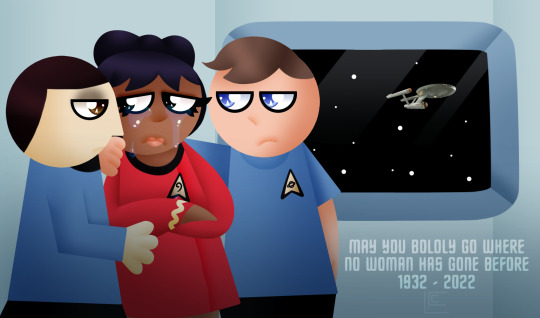
So...another Trekkie passed away this week.
Now there are two on the bridge searching for a way beyond space. Poor captain Kirk, slowly losing his fellow pals...he might be next.
So, to reassure him, I threw Uhura into an escape pod, along with Spock and McCoy (dead trekkies as well) She's really sad because she has to leave, for Kirk told her she can't be in the Enterprise anymore. He too, was sad, but he was the boss, and Uhura had to quit. She will miss Spock's intelligence, McCoy's seriousness, Scotty's clumsyness...but above all, what LT Uhura will never forget...is James T. Kirk's maneuvering. She's one of the best, and her mission has already come to an end. It's time for her to go home.
May you boldly go where no woman has gone before...
Farewell, Nichelle Nichols.
Hope you like it.
Artwork (c) @CreativeCuquiLu
Star Trek (c) Desilu Productions and CBS Paramount Television
WATCH IT - https://www.youtube.com/watch?v=MCdqb0BHNis
#sad#speedpaint#tribute#rest in peace#lt uhura#trekkie#star trek#star trek tos#the original series#nichelle nichols#farewell#escape pod#going home#it's over#the end#leaving#boldly go#where no woman has gone before#vulcan#mr spock#leonard nimoy#live long and prosper#doctor mccoy#leonard mccoy#deforest kelley#conforting#(no deletion please!)#(tumblr also prevents sad stuff)#enterprise#ship
2 notes
·
View notes
Text
I Love Lucy
An oldie (picture not HD quality) but goodie interview Lucille Ball did with Barbara Walters. They don't make them like Lucy anymore, but we have hours of footage to enjoy in interviews like this and reruns of her shows.
youtube
Interesting factoid I did not know until recently is that Lucy was key in getting the original Star Trek series made and on television. Had to fight her company Desilu's board to get the green light for a pilot, then put up her own money for a second chance when the first pilot episode didn't do well. Second time around was a hit and Desilu produced the show until she sold the company to Paramount.
Bonus Video: Lucy gave of herself to younger people aspiring to showbiz careers. (I remember once hearing Barbara Eden say she was offered the chance to develop something with Lucy's company when she chose "I Dream of Jeannie", and she often wondered what could have been had she chosen Desilu Productions.) Here's a 1970s Q&A she did with UCLA students who asked her questions and asked for advice...California sure has changed since the 70s. Lucy's husband Gary Morton was again with her, this time helping field questions from the students:
youtube
0 notes
Photo

Oh, hey, the same Heritage Auctions lot that features the medical tunic from Star Trek: The Motion Picture and Star Trek II: The Wrath of Khan also has this remarkable piece: the phaser rifle used by James T. Kirk in the second Star Trek pilot, “Where No Man Has Gone Before.”
The description from Heritage is as follows:
Vintage original Phaser Rifle highly visible used by "James Kirk" (Shatner) in the third Star Trek episode aired on TV, "Where No Man Has Gone Before," on September 22, 1966. This was the second pilot which ultimately launched the series, and was the debut of William Shatner in his iconic role as "Captain James Kirk", replacing "Commander Pike" (Jeffrey Hunter) from the original pilot.
Constructed of unique carved wooden body finished in automotive quality metallic blue paint, with tooled aluminum barrel shaft emanating from a grooved conical turret and ending in a focusing-dish emitter tip. The central body of the weapon is bisected by 3-clear Lucite cylinders, each containing brass conduit embedded in multi-color ports. The wooden grip houses a tooled aluminum core with a working, spring-loaded trigger, there is a sliding switch representing force adjustment and the butt of the gun features a black grab-handle for added stability of user. The futuristic weapon is expertly finished with ornamental multi-color buttons, panels and grills, a telescoping antenna and even the nuanced detail of a serial number plate behind the grip on each side of the body. For the second pilot Star Trek creator Gene Roddenberry wanted "a really big gun" to help amp up the action for his space adventure. The 33.75" x 14" x 6" Phaser Rifle is incredibly sturdy and solid considering the designer and manufacturer, Reuben Klamer, was only given 2-weeks to deliver the prop, from design to fabrication to finishing. In the episode, the Phaser Rifle was originally used by "Spock" (Leonard Nimoy) prior to Kirk using it to capture rogue "Lt. Commander Mitchell" (Gary Lockwood) and "Dr. Dehner" (Sally Kellerman). While the instantly identifiable prop was used in promotional materials leading up to the episode, as well as appearing on the early Star Trek lunch box, it was never used on screen again.
The prop is accompanied by its original custom wooden hinge-lidded case with fitted styrofoam interior. Labeled "Reuben Klamer Assoc," measuring 37.5" x 17.5" x 7.5." Also includes vintage original 22" x 14" schematic drawing of the final, Roddenberry-approved design, (7) pages of inter-department correspondence between Gene Roddenberry, Bob Justman, Bernie Weitzman and Ed Pearlstein discussing the commission and creation of the rifle - including 1-typed letter on Desilu Productions stationery from Roddenberry to Reuben Klamer, signed, "Gene Roddenberry." Also includes (7) 3" x 5" black and white Polaroid photos of the gun and (1) 8" x 10" production photo of "Kirk" holding the prop beside "Dr. Dehner" (Kellerman). This one-of-a-kind Phaser Rifle is among the very top "Holy Grails" of the science fiction collector's universe, as it helped sell Star Trek to the network, forever influencing the genre. The prop exhibits minor age, production wear and handling. It remains in vintage production used Fine condition.
The opening bid is $125,000.
207 notes
·
View notes
Text

The musical documentary, Elvis That's The Way It Is, was shot and released within a few short months from the summer of 1970. Produced at MGM, which was in the process of being dismantled under the harsh regime of James T Aubrey, aka the Smiling Cobra, it had some interesting and highly accomplished people behind it.
It was directed by two-time Academy Award Winner (short subject and documentary), Denis Sanders. The Director of Photography was legendary cinematographer Lucien Ballard who had credits dating back to the 1930s. It was edited by Henry Berman, who also had been working in Hollywood since the '30s and was the brother of producer Pandro S Berman.
The (uncredited) producer was Herbert F Solow, an MGM vice-president in charge of the studio’s US and UK motion picture and television production. Prior to his tenure at MGM, he had worked for Lucille Ball at Desilu and had successfully pitched Star Trek to NBC, along with launching other iconic television franchises.
The movie documented Elvis' summer engagement at the International Hotel, Las Vegas, which was owned by Kirk Kerkorian, who also owned MGM. At that time he was building up his hotel and leisure investments and winding down MGM's film production schedule. In his 2015 obituary, the BBC said that he was well known for buying and selling MGM three times and making a profit each time.
#elvis in the 70s#elvis presley#elvis history#elvis#elvis fans#rock history#elvis 1970s#musicians#las vegas history#las vegas#old hollywood#classic hollywood#golden age of hollywood#classic film
8 notes
·
View notes
Text
Vintage Shows to Watch While You Wait for the Next Episode of WandaVision - The 60s
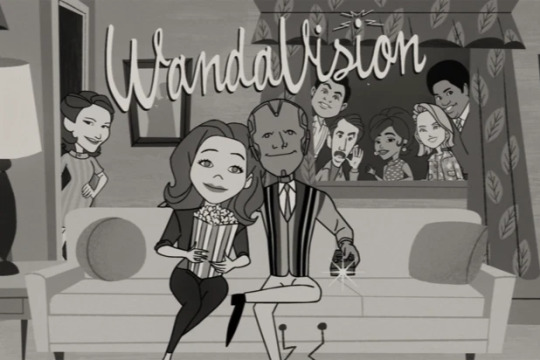
So the 60s is the era that Wandavision pulls most heavily from for it’s inspiration. So much so that one could make the argument that each of the first three episodes are all set in the 1960s. Episode one pulls from the early 60s with multiple Dick Van Dyke refences, episode two is very Bewitched inspired, and episode three is aesthetically very similar to The Brady Bunch which started in ‘69. As such it was hard to narrow down the list for this decade and I had to get creative in some ways.
1. The Andy Griffith Show (1960 - 1968)

The Andy Griffith Show gets kind of a bad rap now a days for being, supposedly, a conservative’s wet dream. People claiming it as such have apparently never actually seen the series. Oh yes, it’s very much set in white rural 60s America and will occasionally present the obliviously outdated joke, but the story of a widowed sheriff being the only sane man in a small town full of lovable lunatics, who prefers to solve his and others problems with negotiation and hair brained schemes as opposed to violence has far more in common with modern day Steven Universe than whatever genocidal fantasy fake rednecks have in their heads.
As the gif above shows Andy Griffith was very subtlety progressive for its time. Andy was a stanch pacifist, pro-gun control, treated drug addicts and prisoners with respect, and all the women he would date had careers, ect. and so on. It’s not a satire making any sort of grand political statements but the series had a moral center that was far more left than many realize.
But if it’s not a satire, then what type of comedy is it?
The Andy Griffith Show excels in what I like to call, ‘awkward comedy’. See everyone in Mayberry is far too nice to just come out and tell a character they’re making an ass of themselves, so therefore whoever is the idiot punching bag of the episode’s focus must slowly unravel as everyone looks on in helpless pity until said character realizes the folly of their ways and the townsfolk come together to make them feel happy and accepted once more. Wandavision takes this polite idyllic awkwardness and plays it up for horror instead of laughs.
2. The Dick Van Dyke Show (1961 - 1966)

The creators of Wandavision actually met with Dick Van Dyke himself to pick his brain and learn how sitcoms were made back then. Paul Bentley also took inspiration from Van Dyke in his performance of the sitcom version of Vision, while Olsen stated Mary Tylor Moore had a heavy influence on her character of Wanda. But more than just being a point of homage, The Dick Van Dyke Show was hugely influential in modernizing the family sitcom and breaking a lot of the unspoken traditions and ‘rules’ of the 50s television era. It’s also just really, really funny.
3.The Alfred Hitchcock Hour (1962 - 1965)
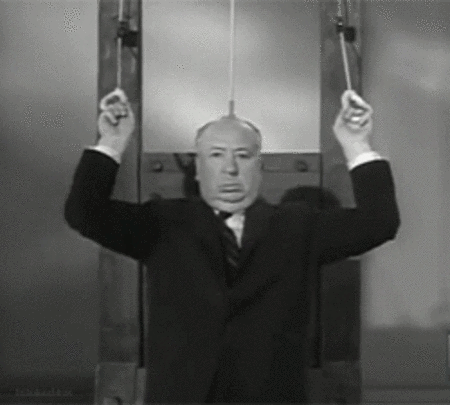
Bit of a cheat here. Alfred Hitchcock Presents actually started in 1955 as a half hour anthology show, but in ‘62 the show got a revamp and was extended into a full hour tv series. I knew I wanted The Twilight Zone to be covered in my episode one recap, but ‘The Master of Suspense’ couldn’t be forgotten. While The Twilight Zone reveled in the surreal and supernatural, Alfred Hitchcock pioneered the thriller genre and made real life seem dangerous, horrifying, and other worldly.
4. Doctor Who (1963 - present day) vs Star Trek (1966 - present day)

Just like how westerns dominated the air waves during the 50s, science fiction was the center of the cultural zeitgeist of the 60s. From Lost in Space to My Favorite Martian, space aliens and robots were everywhere. So naturally I had to name drop the two sci-fi juggernauts that still air to this today. If you thought that the rivalry between Star Wars and Star Trek was bad then you’ve never seen a chat full of Whovians and Trekkies duking it out over who is the better monster, the Borg or the Cyberman. But which one has the more influence over Wandavision?
Well Star Trek owes it’s existence to sitcoms. As with The Twilight Zone before it, Star Trek was produced by Desilu Productions and it’s co-founder and CEO, Lucille Ball, was the series biggest supporter behind the scenes, lobbying for it when it faced early cancelation. As with all things sitcomy, everything ties back to I Love Lucy in the end. However despite that little backstory, it would seem that the series has very little to do with Wandavision itself beyond being quintessentially American.
I would argue that Wandavision owes much to Doctor Who though. Arguably more so than any show mentioned in this retrospective. Time travel, alternate realities, trouble in quite suburbia, brainwashing, people coming back from the dead, ect... just about every trope you can find in Wandavision has also appeared in Doctor Who at some point. As a series that can go anywhere and do anything, Doctor Who was a pioneer of marrying genres in new and interesting ways.
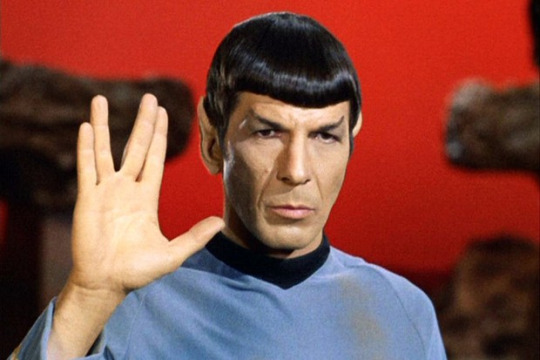
5. Bewitched (1964 - 1972) and I Dream of Jeannie (1965 - 1970)

It’s hard to pick one series over another because they’re essentially the same show. A mortal man falls in love with a magical girl who upends their lives with magic filled hijinks as they try their best not to have their secret discovered by the rest of the world. And both have their fingerprints all over the DNA of Wandavision.
There’s only two core differences; Samantha and Jeannie have completely different personalities, with Sam being confident and knowledgeable and Jeannie being naïve and oblivious, along with their relationships with their respective men, Sam and Darrin being married and in love at the start of the series and Jeannie chasing after Tony in the beginning in a will they/won’t they affair, finally only getting together in the last season.
6. The Munsters (1964 - 1966) vs The Adams Family (1964 - 1966)

Fans of these two shows are forever sadden that there never was a crossover between them. Because they’d fit perfectly together. Both shows are about a surreal and macabre family living in American suburbia and disrupting the lives of their neighbors with their otherworldly hijinks. Sound familiar?
The main difference between the two shows is the way the characters viewed their placement in the world they inhabit.
The Munsters were always oblivious to the fact that didn’t fit in. They just automatically assumed everyone had the same personal tastes as them. Whenever they encountered anyone who behaved strangely around them they would write that person off as being the odd one rather than questioning themselves. As such the main cast was structured like a stereotypical sitcom family who just happened to be classic movie monsters.
The Addams were well aware that they were abnormal and they loved it! They lived life with in their own little world and didn’t care what anyone thought of them. As such the characters were far more colorful and quirky as individuals but there was little in the way of refences to other horror franchises beyond just a general love of the twisted and strange.
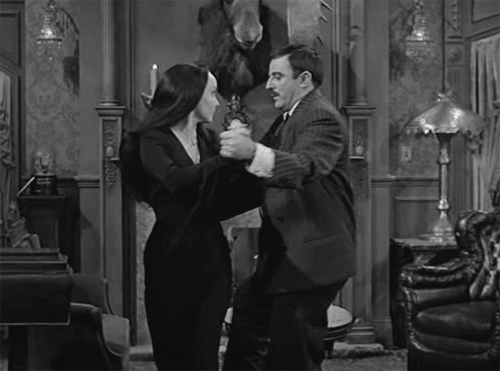
7. Green Acres (1965 - 1971) and the Rual-verse (1962 - 1971)

So the MCU is not the first franchise to bring viewers an interconnected universe to the small screen. Far from it, as sitcoms had been doing this for decades, starting with the ‘rualverse’. Beverly Hillbillies, Petticoat Junction, and Green Acres were all produced by the same company and were treated as spinoffs of each other, complete with crossovers and shared characters and sets.
Of the three, the last show, Green Acres, has the most in common with Wandavision. A well to do businessman and his lovely socialite wife settle down in small town America on a farm in order to get away from the stresses of city life, only to find new stresses in the country. Eva Gabor, herself a natural Hungarian, plays the character of Lisa as Hungarian making her one of the few non-native born Americans on tv screens during the cold war. Despite her posh nature and original protests to the move, Lisa assimilates to the rural life far easier than her husband, Oliver. Who, as the main comedic thread, can’t comprehend his new quirky neighbors’ odd and often illogical behavior.
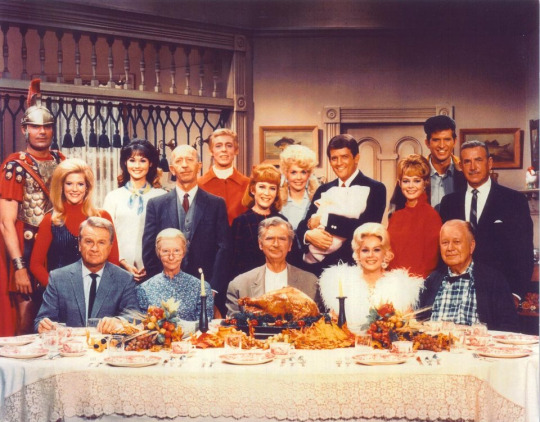
8. Hogan’s Heroes (1965 - 1971) and Get Smart (1965 - 1969)

So as comic fans have been quick to point out, it’s looking like both A.I.M. (Hydra) and Sword (Shield) will be players in the story of Wandavision. To commemorate that here’s two shows to represent those opposing sides. Although in truth, neither series has anything else in common with each other but I need to condense things down someway.
In Hydra’s corner we got Hogan’s Heroes. A show all about taking down Nazis from within.
I love, love, love, ‘robin hood’ comedies where a group of con artists try week after to week to pull one over the establishment. The Phil Silvers Show, Mchale's Navy, and Top Cat, just to name a few examples are all childhood favorites of mine. However while those shows had a lot of morally ambiguous characters, Hogan’s Heroes has very clear cut good guys and bad guys, cause the bad guys are Nazis and the show relentless makes fun of the third reich as should we all. In fact I was watching Hogan’s Heroes while waiting for the GA run off election results. Fortunately my home state decided to kick out our own brand of Nazis this year.
For Shield, we got the ultimate spy spoof, Get Smart. Starring, Inspector Gadget himself, Don Adams, as the bumbling Maxwell Smart. Get Smart, is a hilarious send up of Cold War espionage but the real selling point of the show, imho, is Max and his co-worker 99′s relationship. You can cut the sexual tension in the air with a knife all while laughing your ass off.
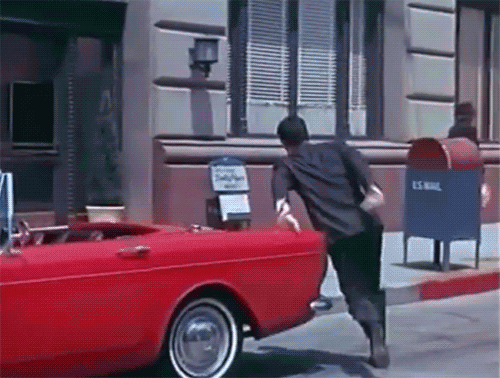
9. Batman (1966 - 1968)
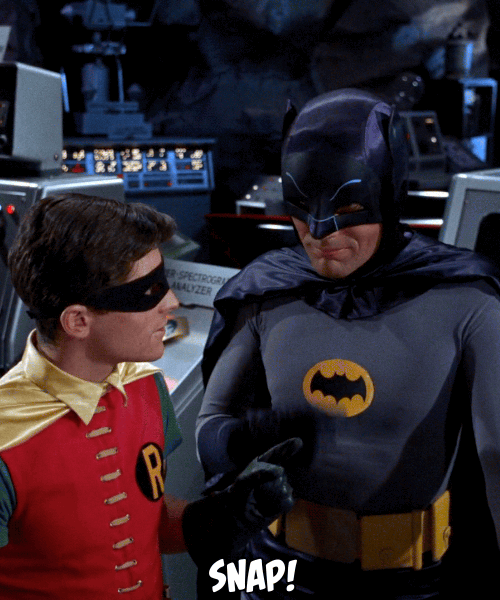
First was Superman and then came Batman. Yet while Superman was a serious action show, Batman was a straight up comedy. Showcasing that superheroes could indeed be funny.
Also shout out for Batman being the only show on this list to have an actual crossover with it’s competitor, The Green Hornet.

10. Julia (1968 - 1971)

Since episode two features the first appearances of Herb and Monica, let’s highlight the first black led sitcom since the cancelation of Amos ‘n Andy over a decade earlier. The show focuses on single mother and military nurse, Julia, as she tries to live her life without her recently decease husband, who was killed in Vietnam, as she tries to raise their six year old son on her own.
The series is cute. It’s more of a throw back to earlier family sitcoms where there’s no fantasy and life lessons are the name of the game. It’s the fact that the main character is a single black woman is what made the show so subversive and important at the time.
Runner Ups
There’s much good stuff in the 60s, so here’s some others that didn’t make the cut but I would recommend anyways.
Car 54, Where Are You? (1961 - 1963)
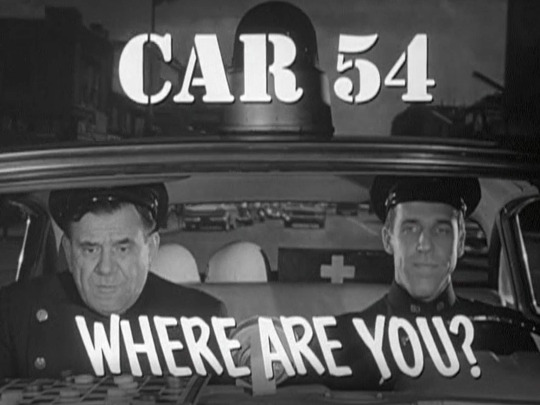
I call this the Brooklynn 99 of the 1960s. Bumbling but well meaning Officer Toody longs to do good in the world and help anyone in need, but often screws things up with his ill thought out schemes. He often drags his best friend and partner, the competent but anxiety riddled, Muldoon into his escapades.
Mr. Ed (1961 - 1966)
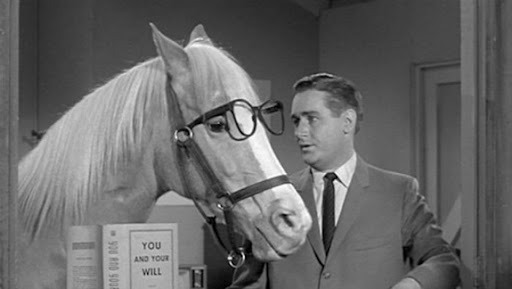
The grandfather of the sarcastic talking pet trope.
The Jetsons (1962 - 1963 and 1985 - 1987)
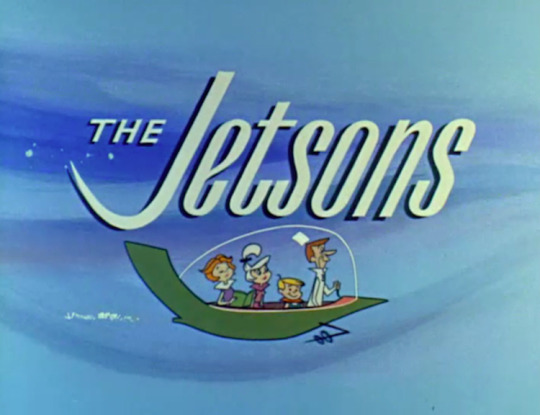
Hanna-Barbera often took popular sitcoms and just repackaged them as cartoons with a fantasy theme to them. The Jetsons has no singular show that it rips-off but is rather more a grab bag of sitcom tropes that feature, robots, computers, and flying cars.
The Outer Limits (1963 - 1965)

The Outer Limits was The Twilight Zone’s biggest competitor in terms of being a sic-fi/horror anthology series.
Gillian’s Island (1964 - 1967)
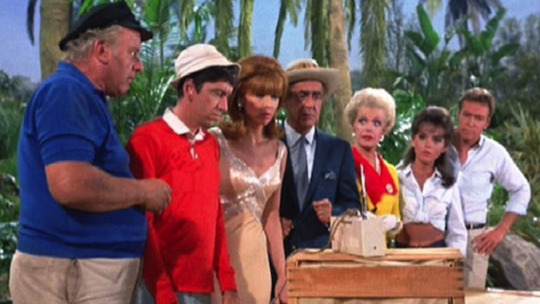
The only comparison to WandaVision I could think of was that this is a sitcom about people being trapped in one place. But by that point I was running out of room on the list. Still it’s one of the funniest shows on here.
So yeah, this took longer than expected cause there’s a lot, here. Hopefully the 70s will be easier. Which I’ll post on Friday.
113 notes
·
View notes
Text
LUCY & THE CRIMINALS
Lucy’s Encounters with the Criminal Underworld ~ Part 3

Lucycoms introduced crime stories to keep plotlines exciting and contemporary. Here’s a look at the thieves, burglars, robbers, murderers, prowlers, second-story men, mobsters, forgers, counterfeitters, and con artists in the Lucyverse!
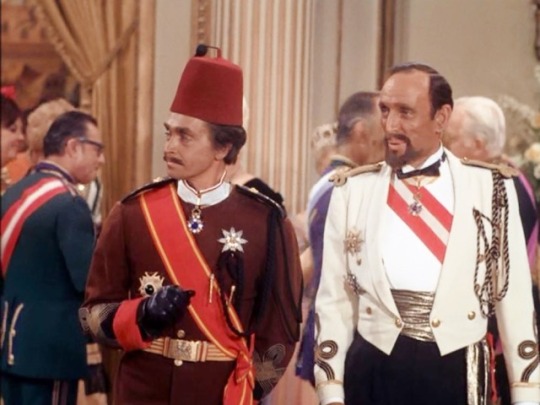
“Lucy’s Impossible Mission” (1968) ~ In this parody of “Mission: Impossible” (a Desilu / Paramount production), Lucy Carter fights international espionage in the persons of Mulhill Omar (Tim Herbert) and Ambassador Korlik of the Slobtoni Embassy (Joseph Ruskin).

“Guess Who Owes Lucy $23.50?” (1968) ~ It’s Van Johnson! Or is it? Lucy loans the film star money to fix his car – but the man turns out to be a con-man posing as Johnson.
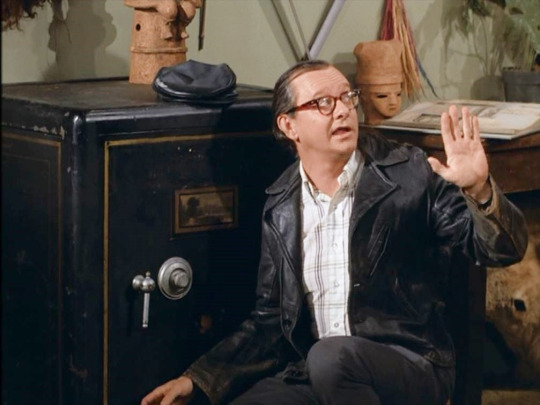
“Lucy and the Ex-Con” (1969) ~ The Unique Employment Agency sends Rocky (Wally Cox), a reformed safe cracker, on an assignment as a janitor. When the place is robbed, Rocky is the number one suspect. Disguised as old ladies, Lucy and Rocky go undercover to catch the real crook...

...Doc Morgan (Bruce Gordon). Morgan is nicknamed Doc because he uses a stethoscope when safe cracking. Bruce Gordon had played mobster Frank Nitti on Desilu’s “The Untouchables” (1959-63).
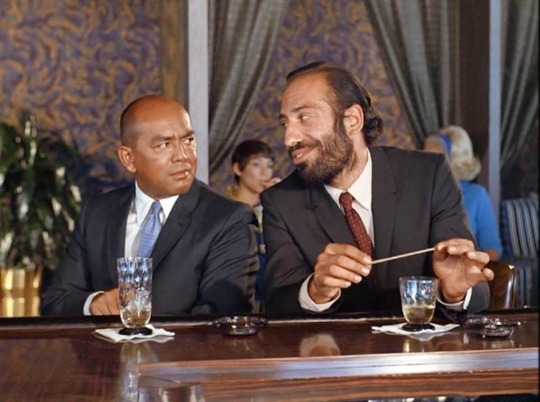
“Lucy and the Great Airport Chase” (1969) ~ Filmed on location at Los Angeles International Airport, Lucy and Harry elude dangerous spies Enemy Agent Yang (Larry Duran) and Enemy Agent Kurt (Sid Haig).
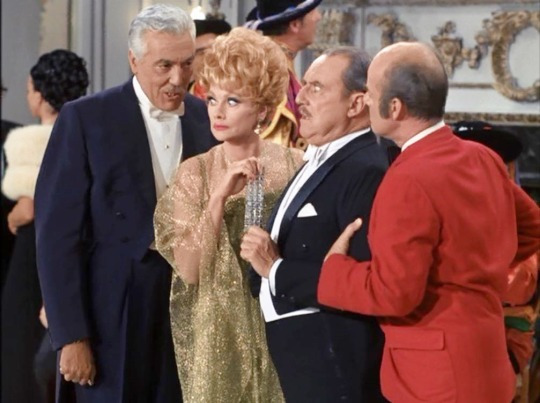
“A Date for Lucy” (1969) ~ Caesar Romero plays jewel thief Tony Rivera, Lucy’s date for a soiree at which he plans to steal the gems of a wealthy dowager. After Rivera is knocked out cold, Lady Warren (Barbara Morrison) discovers she’s been robbed. When Lucy tells her who it was, she can’t believe it.
“He’s so charming! He’s so handsome! He looks just like Cesar Romero!”

“Lucy Gets Her Man” (1969) ~ Harry’s old Army buddy is working in Counter-Intelligence and needs a stenographer to help get the goods on suspected spy Arthur Vermillion (Victor Buono). Naturally, Lucy gets the assignment. Isabel (Mary Wickes) calls Harry Jack the Ripper, comparing him to the famous London serial killer.

Lucille Ball and Victor Buono were both featured in “Like Hep!”, a Dinah Shore special that aired a few months after this episode. In it, Ball did a variety of sketches, including one set in a speakeasy with Buono as a mob boss. On television, Buono is probably best remembered for playing King Tut, one of the arch villains on “Batman” (1966-68).

“Lucy’s Burglar Alarm” (1969) ~ When Lucy and the kids are robbed and Harry refuses to fund a $500 burglar alarm, Craig comes up with an elaborate home alarm system. Guy Marks plays the well-dressed crook.
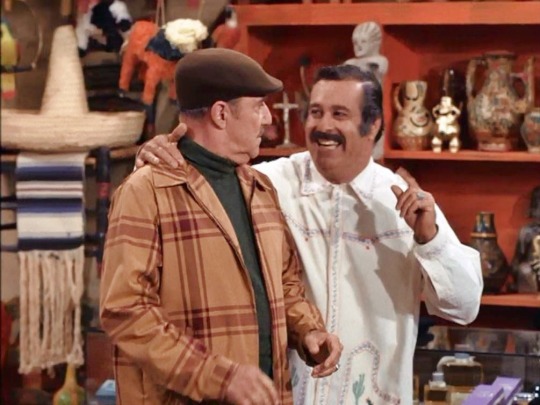
“Lucy and Viv Visit Tijuana” (1970) ~ On a sightseeing trip to Mexico, Harry is convinced by shopkeeper / smuggler Pedro (Don Diamond) to transport a stuffed animal over the border, claiming it is for his 3 year-old niece living in Los Angeles. Stopped at the border, they discover it actually contains contraband.
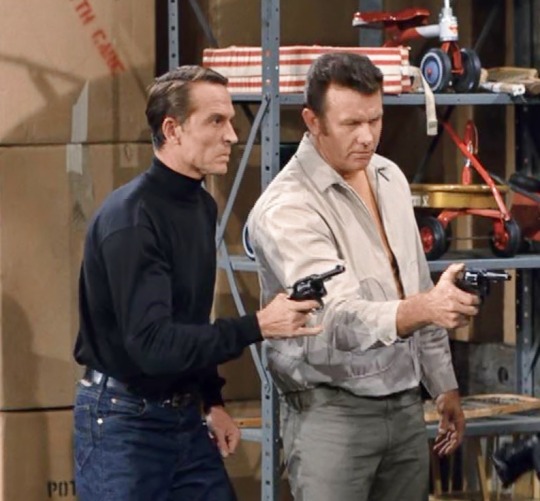
“Lucy and Wally Cox” (1970) ~ Lucy and Wally are assigned to be security guards at a warehouse, where they encounter armed robbers Lefty Logan (X Brands) and Baby Face Johnson (Gil Perkins).

“Lucy and Ma Parker” (1970) ~ When a woman and two children mysteriously move in next door, Lucy discovers that they're a band of criminals led by Ma Parker (Carole Cook). Her cohorts are little people dressed as archetypal children: Herman Golub (Billy Curtis) is dressed as Buster Brown, and Milton / Mildred (Jerry Maren) is dressed as Shirley Temple.

Lucy is recruited to impersonate Ma Parker and help nab dangerous Chicago mobsters Muggsy (Boyd ‘Red’ Morgan) and Joe Grapefruit (Marc Lawrence).
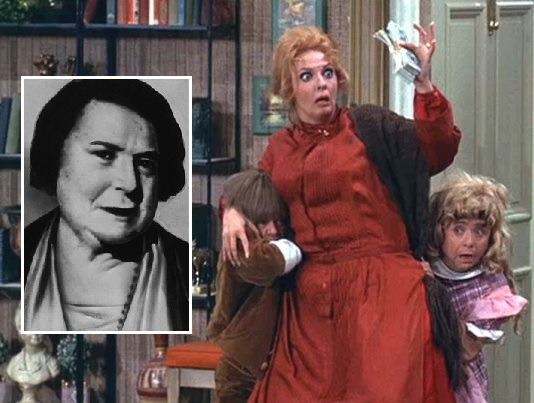
The title character is a parody of Kate 'Ma' Barker (inset), the mother of several criminals who ran the Barker gang in the 1930s. She traveled with her sons during their criminal careers.

“Lucy and Harry’s Italian Bombshell” (1971) ~ When Lucy and Kim sleep at the office, they encounter a burglar (Herbie Faye). Instead of robbing them, the he actually gives Kim and Lucy five dollars!
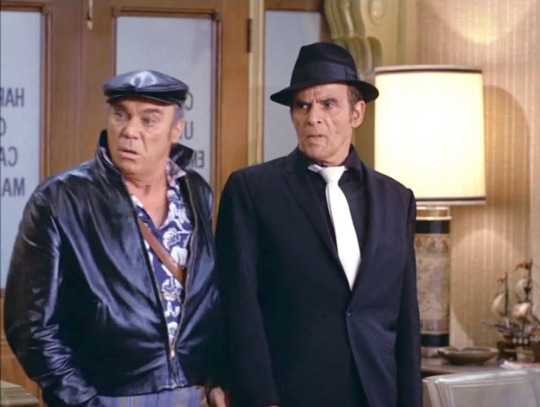
“Lucy and Mannix are Held Hostage” (1971) ~ Mannix (Mike Connors) and Lucy are taken hostage by Vernon (John Doucette) and Ruby (Marc Lawrence).
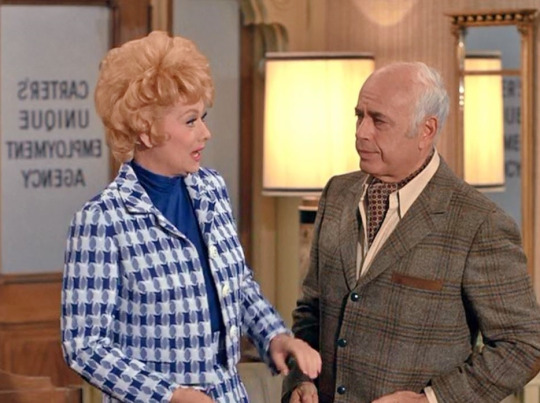
“Lucy and the Candid Camera” (1971) ~ Allen Funt, host of TV’s “Candid Camera”, plays himself and his con-man doppelganger.

As the con-man, he convinces the Carters to rob a fur salon, then a bank - all under the impression they are pranks for the TV show.
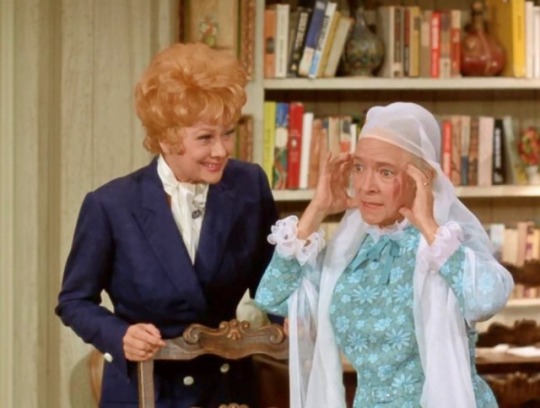
“Lucy and the Little Old Lady” (1971) ~ When Mrs. Brady, a kindly widow from out of town (Helen Hayes), comes to the Unique Employment Agency looking for a part-time job, Kim becomes suspicious that she may be running a con game so they plan to hold a fake séance to expose her. The character Hayes plays here capitalizes on her Oscar-winning role of Ada Quonsett in Airport (1970), a sweet little old lady who cons the airlines and stows away to get free air travel. On “Here’s Lucy” the plot relies on the premise that Mrs. Brady could be a con artist.

“Lucy and the Reckless Wheelchair Driver” (1972) ~ Hickey, a show business agent (Jesse White), tries to sue Lucy for hitting his client with her wheelchair. Lucy and Harry think the young man is faking and that the agent is a con artist.

“Dirty Gertie” (1972) ~ In this story based on A Pocketful of Miracles, Lucy is mistaken for an apple peddler who just happens to be the good luck charm of Rocky (Bruce Gordon), a mob boss. The police recruit Lucy to help capture the mobster in his own nightclub. Johnny Silver plays Benny, one of Rocky’s mob.

Other mobsters include ‘Moose’ Murdock (John Harmon) and ‘Numbers’ Smith (Ed Hall).
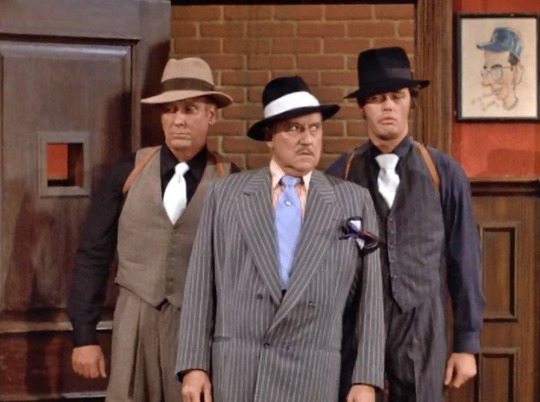
“My Fair Buzzi” (1972) ~ Kim’s shy and awkward friend Annie Whipple (Ruth Buzzi) comes out of her shell in order to audition for a 1920s revue in which Harry plays a mobster named ‘Big Jake’.
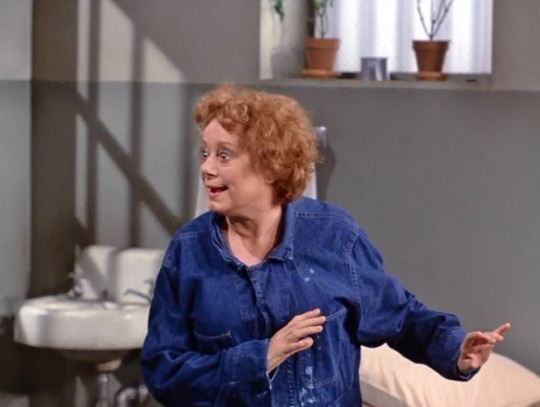
“Lucy Goes To Prison” (1973) ~ Lucy goes undercover as a convict to get information out of bank robber Mumsie Westcott (Elsa Lanchester).

“Lucy Plays Cops and Robbers” (1973) ~ Lucy forms a neighborhood watch group and starts seeing criminals where there are none. After several false alarms to the local police, a real burglar (Gino Conforti) actually shows up!

“Lucy the Sheriff” (1974) ~ Lucy finds out that her grandmother was the first woman sheriff of a Montana town that is celebrating its centennial. She is asked to play her grandmother at the celebrations, which include the recreation of a bank robbery. Lucy is enjoying playing lawmaker until Jake (Cliff Osmond) and Rusty (John Craig), a couple of genuine robbers, interrupt the celebration and take her hostage!
#Lucille Ball#Here's Lucy#TV#CBS#Gale Gordon#Gangsters#Gino Conforti#Jesse White#Elsa Lanchester#Helen Hayes#Allen Funt#Wally Cox#Bruce Gordon#Van Johnson#Cesar Romero#Lucie Arnaz#Desi Arnaz Jr.#Carole Cook#Jerry Maren#Ma Barker
2 notes
·
View notes
Text
Star Trek: Facets of Filmmaking
As it turns out, before Star Trek was fully realized in the form we know today, the show was originally not going to be about Kirk and the Enterprise at all. In fact, it was going to be about a ship called the S.S. Yorktown, captained by a man named Robert April, on a mission to explore the Milky Way galaxy. The original concept, still named Star Trek and set in the 23rd century, was loosely based on the Horatio Hornblower novels, and took inspiration from The Voyage of the Space Beagle, the Marathon series and the 1956 film Forbidden Planet.
By the year 1964, when this idea began to take shape, Gene Roddenberry, creator of Star Trek was an experienced writer for western television shows, and was well accustomed to (at the time) television’s favorite and most popular genre. By 1964, however, Roddenberry was tired of the shootouts, and wanted to do something different, something with a little more depth to it.
Still, Roddenberry knew what the executives, and the public, was used to. As a result, the first draft of this new Star Trek idea was generalized as a sort of ‘Wagon Train to the Stars’, a formulaic type of show where every episode was a standalone adventure in the continuous exploration of the final frontier: space.
As Roddenberry wrote the draft, a few things changed. Gone was Robert April, replaced by Captain Christopher Pike, who would be portrayed by Jefferey Hunter, and the rest of the crew. The name of the ship changed too, to the more familiar Enterprise. As these changes came about, so too did the true nature of Roddenberry’s dream show: both an adventure story, and a thought-provoking morality tale.
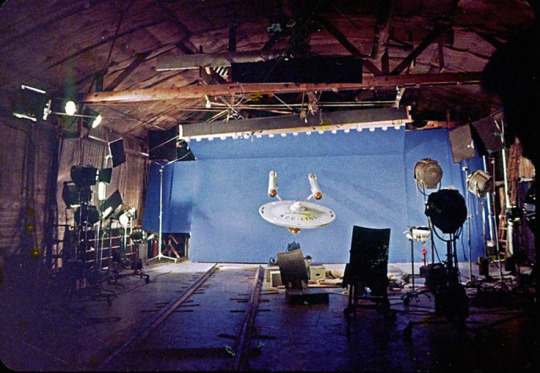
Armed with his script, Roddenberry brought Star Trek to Desilu Productions, (a rather large television production company headed and half-formed by Lucille Ball herself) and met with director of production Herbert F. Solow. Solow saw promise in the concept, and signed a three-year development contract with Roddenberry.
Star Trek moved into the next stage of development. Further drafts were drawn up and the idea that would later become the episode The Cage was revised, until it was shown to CBS as part of the ‘First Look’ deal with Desilu productions. CBS wasn’t impressed with the show, declining to purchase it. They had another ‘space show’ in development that seemed too similar, a show that would become Lost in Space.
However, another company became interested: NBC. In May of 1964, Grant Tinker, the head of the West Coast programming department, commissioned the pilot that would become The Cage (which would later be reworked into the episode The Menagerie). After it was completed, NBC turned it down, claiming that it was ‘too cerebral’, but although this was a mild defeat, Star Trek wasn’t beaten. NBC still showed interest in the concept, and made the highly unusual decision to commission a second pilot: the episode that would become Where No Man Has Gone Before.
With this came quite a few changes.
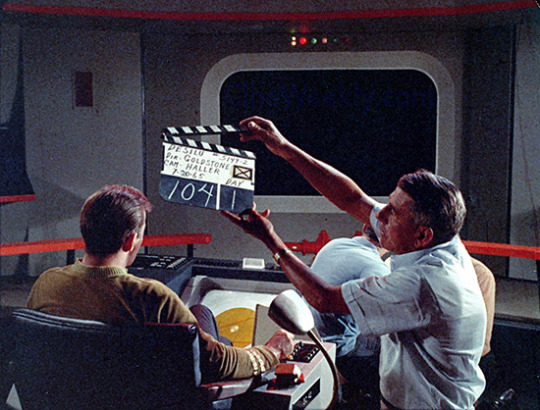
Christopher Pike was scrapped as a character, as was the vast majority of other cast members. Only the character of Spock, as portrayed by Leonard Nimoy, was kept, and of the other cast members, only Majel Barrett stayed, demoted from playing the second-in-command (scrapped due to the unthinkable notion of a woman Commander) to the ship’s nurse, Christine Chapel. With this new pilot came an onslaught of new, more familiar names and faces: William Shatner as Captain Kirk, Chief Engineer Lieutenant Commander Scott played by James Doohan, and Lieutenant Sulu, (originally a physicist in the first episode, but a helmsman afterwards) played by George Takei.
This pilot passed with flying colors, and with that, NBC added Star Trek to their fall lineup for 1966.
Still, there were changes to be made. In this first pilot, the ship’s doctor was Mark Piper, played by Paul Fix. Dr. Leonard McCoy, played by DeForest Kelley, would join the cast when principal filming for the first season began. Also joining the cast was Nichelle Nichols, playing Lieutenant Uhura, and Grace Lee Whitney as Yeoman Rand. (Whitney would depart halfway through the first season, after being on the receiving end of sexual assault from one of the executives of the show, but would later appear in the film series beginning in the 1970s.)
Besides Where No Man Has Gone Before, NBC ordered 15 episodes to start off the show. The first episode of Star Trek, The Man Trap, aired at 8:30 PM on Thursday, September 8th of 1966 as part of NBC’s ‘sneak preview’ time slot, received with mixed feelings. While some papers and reviewers genuinely liked the new show, (such as The Philadelphia Inquirer and the San Francisco Chronicle) others, such as The Boston Globe and The New York Times didn’t. Variety described the show as ‘an incredible and dreary mess of confusion and complexities’, and predicted that it would fail.
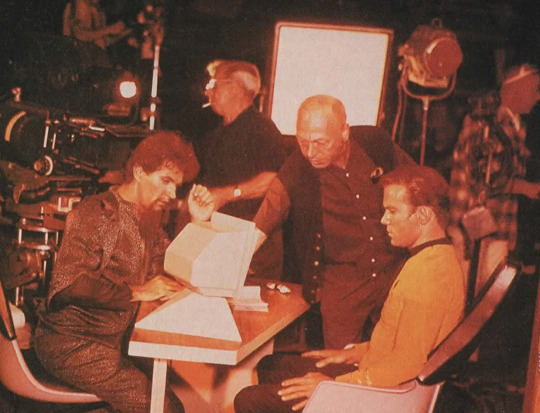
Fighting for position against reruns of previous shows, despite the critics’ warnings, Star Trek won a time slot, and began with decent ratings. However, it didn’t last long. By the end of the first season, Star Trek was sitting at 52nd out of 94 programs.
Star Trek was sinking, fast.
But even then, it wasn’t without its supporters.
The editor of Galaxy Science Fiction, Frederik Pohl, offered up his amazement that Star Trek’s consistency remained good, with no drop in quality after its Tricon winning early episodes. He expressed his fear that the show would be cancelled due to its low ratings, and pleaded with audiences to help save Star Trek, writing letters to prevent its cancellation.
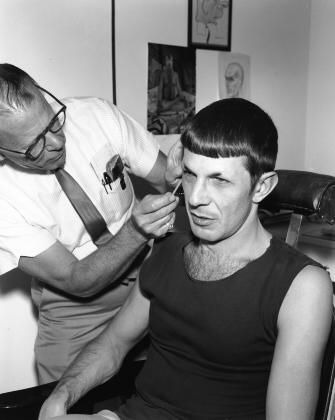
At this time, the only thing that was keeping the show on the air in the first place was the demographics it was reaching. NBC had become interested in the demographics of the shows it was producing in the early 1960s, and by 1967, was using that as part of the decision making as to which shows got dropped.
And something about Star Trek’s demographics interested NBC very much: it had managed to attract ‘quality’ audiences: high income, high educated people (primarily males).
As a result, NBC ordered ten more episodes for the first season, and ordered a second in March of 1967. The network then changed Star Trek’s timeslot, moving it to 8:30 on Friday nights, a timeslot that seemed doomed for failure among the audience that Star Trek had gathered.
The next season, things didn’t seem to be getting any better. It was at this point that the show added on Walter Koenig as Ensign Chekov (as George Takei was working on The Green Berets and was not as available for shooting), although some might have wondered why they would have bothered. The show’s ratings were still dropping. William Shatner, expecting the show to be cancelled, began to prepare for other projects.
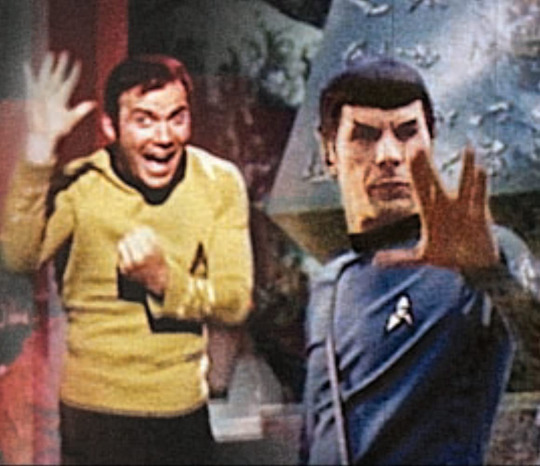
Again, the demographics saved the day.
Roddenberry’s initial concept of adventure alongside morality tales intrigued the audiences Star Trek had attracted. The show had values, values that had to be applied to every situation. The show was sincere, and serious in its exploration of issues like racism, war and peace, human rights, technology, class warfare, and imperialism, far different in tone and content than the other chief sci-fi show at the time: Lost in Space. As a result, the show generated a more interested fanbase, perhaps the first true ‘fanbase’ of any franchise in history. In the end, it was they who saved Star Trek.
By the end of the first season, NBC had received well over 29,000 fan letters. During the second season, Roddenberry began a campaign to persuade fans to write in to NBC, to support the show and save the program. Between December of 1967 and March of 1968, NCB had received nearly 116,000 letters from people who did not want to see Star Trek cancelled. Science fiction conventions, magazines, and newspaper columnists encouraged readers to save what was called ‘the best science-fiction show on the air’.
The fans didn’t stop with letters. Over 200 students of the California Institute of Technology marched to NBC’s studio in Burbank to protest the cancellation of Star Trek in January of 1968, carrying signs that said things like ‘Vulcan Power’. They weren’t alone; other groups of students of MIT and Berkeley did the same thing in New York City and San Francisco.
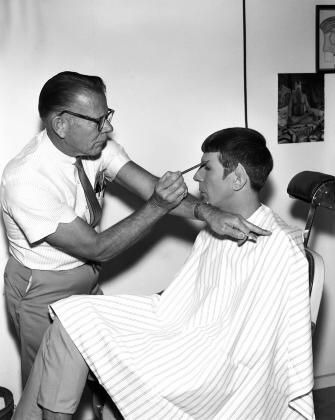
Interestingly, the letters that NBC received were not of the typical ‘fan mail’ quality.
“Much of the mail came from doctors, scientists, teachers, and other professional people, and was for the most part literate–and written on good stationery. And if there is anything a network wants almost as much as a high Nielsen ratings, it is the prestige of a show that appeals to the upper middle class and high-brow audiences.” (Lowry, Cynthia (January 17, 1968). “One Network Goes ‘Unconventional’”. Nashua Telegraph. Associated Press. p. 13)
“The show, according to the 6,000 letters it draws a week (more than any other in television), is watched by scientists, museum curators, psychiatrists, doctors, university professors, and other highbrows. The Smithsonian Institution asked for a print of the show for its archives, the only show so honored.” (Scott, Vernon (February 7, 1968). “Letters Can Save 'Star Trek’”. The Press-Courier. Oxnard, California. United Press International. p. 17.)
After the episode The Omega Glory, on March 1st, 1968, the announcement came:
“And now an announcement of interest to all viewers of Star Trek. We are pleased to tell you that Star Trek will continue to be seen on NBC Television. We know you will be looking forward to seeing the weekly adventure in space on Star Trek.” (“Letters For 'Star Trek’ Hit 114,667”. The Modesto Bee. April 14, 1968. p. 26.)
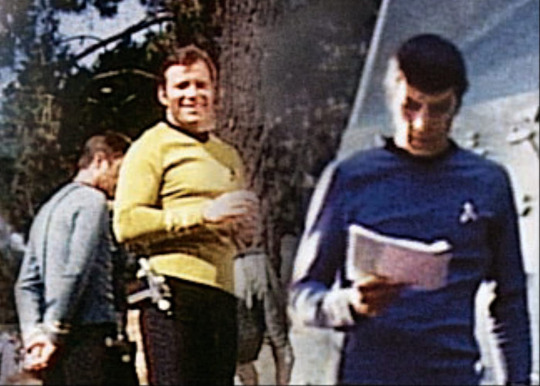
If this was intended to stop the letter writing campaign, it was a dismal failure. A comparable number of letters came in to NBC following this announcement, full of thanks for renewing the show for the third season.
In March of 1968, NBC moved Star Trek to another time slot: 10:00 PM on Fridays, an even worse shot than before. To make matters worse, it was only being seen by 181 out of 210 of NBC’s affiliates. Roddenberry fought the network to move it to a better time, but he was denied. Exhausted, Roddenberry quit working on production of Star Trek, remaining executive producer in name only. The running of the show went to Fred Freiberger, who was with the show as it stood on its last, shaky, legs.
And it was on its last legs.
Star Trek season three was a dying breath, the death-rattle of a show that was being intentionally destroyed by its own network.

To quote Nichelle Nichols:
“While NBC paid lip service to expanding Star Trek’s audience, it [now] slashed our production budget until it was actually 10% lower than it had been in our first season … This is why in the third season you saw fewer outdoor location shots, for example. Top writers, top guest stars, top anything you needed was harder to come by. Thus, Star Trek’s demise became a self-fulfilling prophecy. And I can assure you, that is exactly as it was meant to be.”
It showed.
While I hesitate to call season three of Star Trek a mess, it is difficult to deny that the show was definitely struggling. Episodes dropped in quality, characters became more exaggerated and less ‘true’. Star Trek stopped filming in January of 1969, and after a total run of 79 episodes, the show was cancelled.
As a newspaper columnist advised:
“You Star Trek fans have fought the “good fight,” but the show has been cancelled and there’s nothing to be done now.”
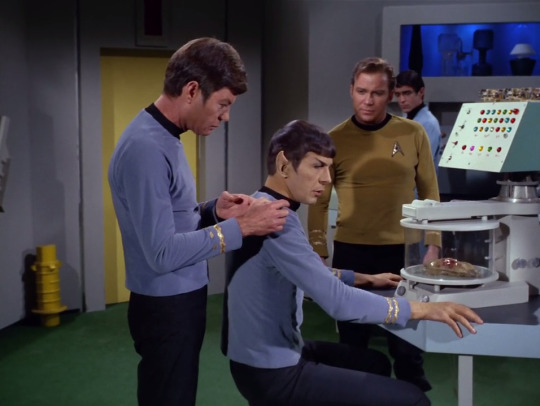
Rather incongruous with the image of the pop-culture giant we know it as today, wouldn’t you think?
So what happened?
As it turns out, Star Trek had enough episodes (thanks to the third season) to enter syndication. Desilu Productions, which at that point had become Paramount, licensed the syndication rights in order to turn a profit, and reruns of Star Trek began airing in late 1969.
In syndication, Star Trek became a cult classic, finding a larger audience on reruns than it had during its original run. The show, which was airing in the afternoons and early evenings, was attracting a young demographic, and, ironically, Star Trek became known as ‘the show that wouldn’t die’. By 1970, Star Trek was boosting Paramount’s ratings, and becoming extremely popular. In January of 1972, over 3,000 fans attended the first Star Trek convention in New York City, kicking off a previously unheard-of trend of organized fan gatherings where they could buy merchandise, meet cast and crew, and screen episodes of the show. These people, coming to be known as ‘trekkies’, took pride in their knowledge and extreme love for this series, which was becoming renowned for being a smart, heartfelt science fiction show that had been cancelled too early.
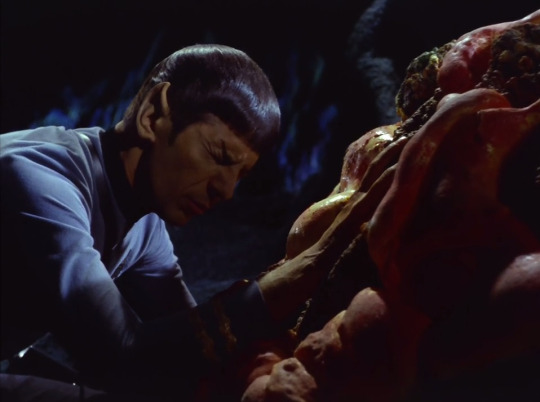
17 years after Star Trek was cancelled and started reruns, Star Trek became the most popular syndicated show of all time. By 1987, Paramount was bringing in $1 million per episode, and by 1994, reruns were still airing in over 90% of the United States of America.
The rest is history.
It has been over fifty years since Gene Roddenberry’s vision of a wagon train to the stars first took flight, and it was a hard battle fought to get as far as it did. Never before had a show garnered the support and devoted love from a fanbase, never had it inspired such huge leaps and bounds in television and fandom alike. Never had a television show meant so much to so many, and continued to do so well past its end.
For a show that struggled through a third season, it seems incredible that Star Trek still holds the weight that it does today. The show that wouldn’t die gained new life beyond the grave, still capturing people’s attention decades after it was cancelled, growing to become one of the best known and best loved television shows ever made.
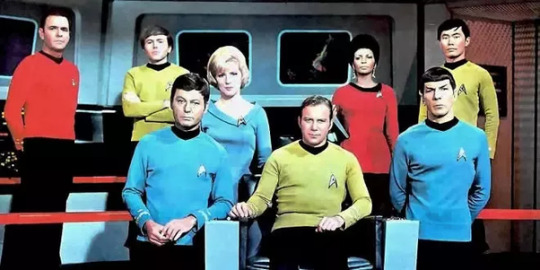
Against all odds, Star Trek lives on, remaining one of the greatest television shows of all time, for very good reason.
Join me for one last article as next time we take one last look at Star Trek in our Final Thoughts. If you have any thoughts, questions, suggestions, recommendations, or just want to say hi, don’t forget to leave an ask! Thank you all so much for reading, and I hope to see you in the next article.
#Star Trek: The Original Series#Star Trek#Television#TV#TV-PG#60s#Drama#Action#Adventure#Science Fiction#Sci-Fi#William Shatner#Leonard Nimoy#DeForest Kelley#James Doohan#Nichelle Nichols#George Takei#Walter Koenig#Majel Barrett#Gene Roddenberry
55 notes
·
View notes
Photo

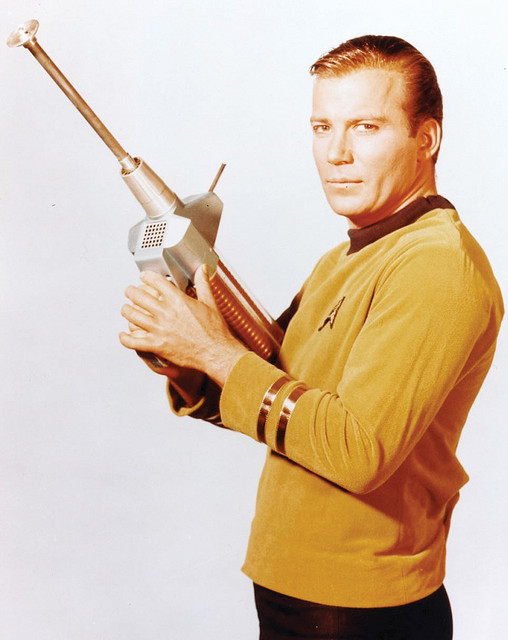
In the last article, we talked a bit about how the publicity photos that came out after the second pilot were a bit different. And a commenter noted the change in uniforms, especially the collars. That's an obvious difference and one we will discuss another time. But today we will talk about another change that we may not have noticed, but affected the appearance of the Enterprise crew as we knew them in The Original Series - sideburns.
Yes, you read it right - sideburns.
In the photo at the top from "Where No Man Has Gone Before," you can see Kirk’s slight sideburns are squared off at the bottom. So are those of most of the male crew members' except for Spock’s. Spock’s alien appearance has included slanted sideburns since the very first pilot. Shatner's regular sideburns carried over into the publicity photos, like the one on the bottom, taken between the second pilot and "The Corbomite Manuever."

But by the time “The Corbomite Maneuver” had started production, suddenly all male members of the crew were wearing slanted sideburns with a point. Notice Shatner’s had just barely started taking shape, but the point was definitely there.

By the end of Season One the sideburns on Shatner and all the male actors on the crew were identical to Nimoy’s in length and in pointiness.
So whose idea was it to slant Spock’s sideburns and why did all male members of Starfleet suddenly begin to sport the style once the series began? The answer is more complicated than you may think.
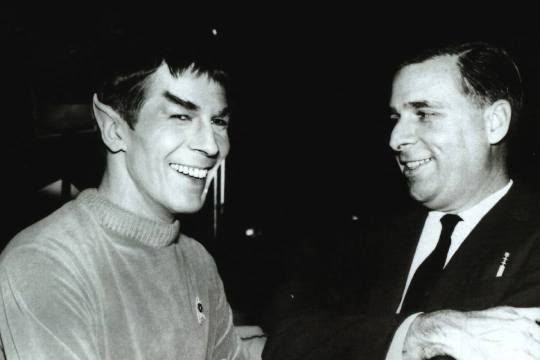
In The Making of Star Trek it is mentioned that the producers wanted futuristic hairstyles for the crew. That was definitely done for the female members as seen in the hairstyle of Yeoman Janice Rand. However, what about the male crew members? The answer begins with creating an addition to Spock’s own hairstyle - the slanted sideburns.
Who came up with this feature that has been part of Spock’s signature hairstyle ever since “The Cage”? In his autobiography I Am Spock, Leonard Nimoy claims that it was his idea to have pointed sideburns as part of what a Vulcan would look like.

Yet, Laurel Goodwin also claims to have originated the idea for Spock’s sideburns. In an interview, she stated that even though she was very disappointed she was not part of the show when it finally did air, there was one consolation:
The thing that took the thorn out of my paw really was Leonard, because I was so pleased for him, and I knew this was going to give him some liquidation, that he could then do what he really wanted to do. And I was very pleased with all of that. And I had come up with the pointed sideburns. And a few other things. But that, very specifically.

However, there is a third contender for the claim to creating Spock’s sideburns. In this video, Gustav Mendoza claims that his father Richard Mendoza was a hairdresser who worked for Lucille Ball and that he helped with the Spock haircut. But he also believes his dad was responsible for the slanted sideburns.
https://youtu.be/3_SFxj4Kwng
On the other hand, in an interview on the Modern Salon website, he states his father created those sideburns to call attention away from Shatner’s toupee. https://www.modernsalon.com/364997/star-trek-sideburns-by-gustav-mendoza

So who was the originator of the pointed sideburns? Do we go by Laurel’s claim? Nimoy’s? Mendoza’s? No matter whose idea it was, it would have to have been early in the process of creating Spock’s appearance.
Maybe it is a combination of all three. It’s possible Laurel did make the original suggestion to Leonard Nimoy before they began testing various looks for him. Then he may have given Fred Phillips a more refined description who possibly passed it to the Desilu hairdresser to work on while he was busy with Spock’s make-up along with supervising the work on other actors. Perhaps Richard Mendoza gave Nimoy his first Spock haircut, following the suggestions that were given to him but also adding his own touches. Keep in mind, this is merely a theory.
Evidently Fred Phillips approved because this was the haircut Leonard Nimoy wore as Mr. Spock when the first pilot was made. He continued to be the only character on the show wearing the slanted sideburns in the second pilot as well. And as we learned earlier, that was also true in the publicity photos between the pilot and the first filmed episode.

But somewhere before the first episode began filming, the decision regarding the male version of the futuristic hairstyle had been made. And it makes sense that they chose to put those pointy sideburns on all the Enterprise crewmen (and all members of Starfleet - Malachi Throne hated them, evidently) because it met the actors’ request that it not be too drastic plus that cut had already been done in the hairstyling department. And as far as Gustav Mendoza’s claim he created them to take the viewer’s eye off Shatner’s toupee, perhaps he meant he suggested them for Shatner after the second pilot and either the producers or Fred Phillips realized slanted sideburns would work for all the crewmen. Again, this is theory.
So starting with “The Corbomite Maneuver” the decree was made that men of the future, especially men in Starfleet, had their sideburns all cut to a point at the end. Once the series began, some male fans began to cut their own sideburns to resemble what they saw on the show. And of course, the Spock haircut was a very popular request heard by barbers, including Leonard Nimoy’s own father.
However... there was one person who was not a fan of slanted sideburns appearing on anyone else other than Mr. Spock. Laurel Godwin, the one who claims to have first conceived of the cut, said during the interview mentioned earlier:
So, even though I was crushed not to be on the show, I was delighted for Leonard. And, when the show started, not being sour grapes, I took a look at it. The first moment that William Shatner walks on, I go, "He's got Leonard's pointed sideburns." That did it. I turned it off and never watched it again.
https://bit.ly/3iOPYiu (Laurel’s interview)
46 notes
·
View notes